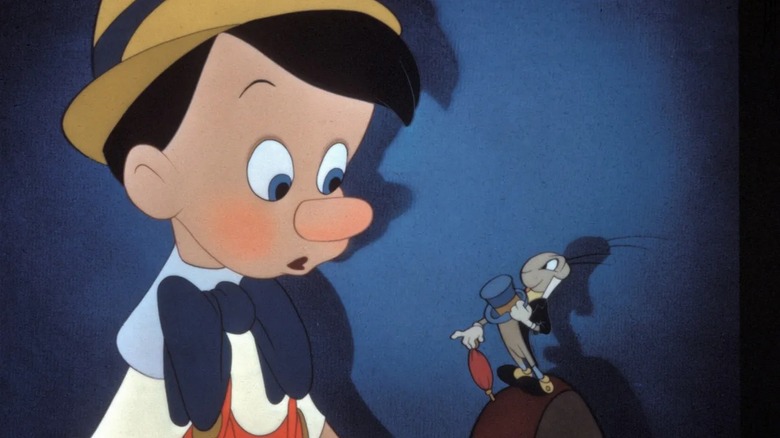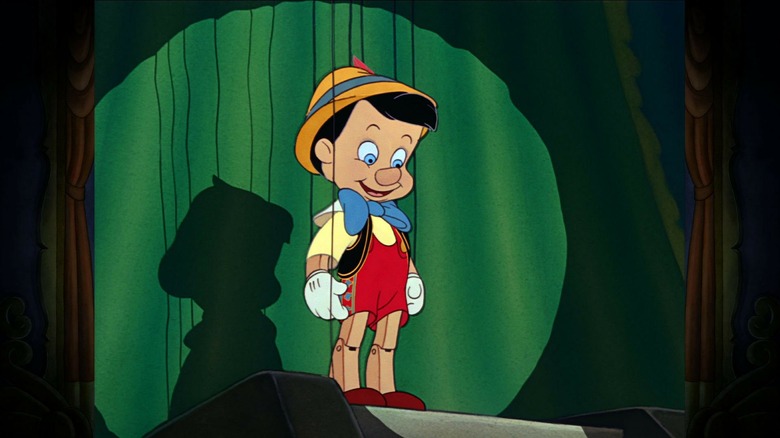
Is there a perfect animated Disney movie? In our minds that reflects subjective tastes, sure. For some, it could be a classic like “One Hundred and One Dalmatians,” or a more recent entry like the refreshingly poignant “Zootopia.” There are multitudes to be found in between — and beyond — as the central emotions associated with a personal favorite Disney animated film are nostalgia and catharsis. However, if we are to consider a perfect Rotten Tomatoes score as a metric, 1940’s “Pinocchio” is the only Disney animated movie (as opposed to live-action or hybrid entries) with a 100% on the Tomatometer.
If we look back on the history of Disney-helmed animated works, the major sources of inspiration were classic fairy tales and children’s novels, the likes that birthed “Snow White and the Seven Dwarfs” or “The Little Mermaid.” However, these adaptations were not always faithful, as some of the darker elements were reworked into themes considered more palatable to children, who were the primary demographic these tales were geared toward. Moral lessons were generally attached to these tales of whimsy and personal growth, with some of the moral complexities simplified for a more sanitized experience. Carlo Collodi’s 1883 novel, “The Adventures Of Pinocchio,” underwent a similar adaptation treatment, as the 1940 version of “Pinocchio” is much less morbid than its source material.
However, this does not mean that “Pinocchio” does not dive into some of the darker elements in Collodi’s book. Think about the basic premise: a wooden puppet carved by an artist yearns to be a “real” boy, and this journey of self-discovery and examination exposes Pinocchio to cruel, exploitative forces. The concept of a puppet being infused with life is body horror in itself, but Pinochhio’s dream to embody the characteristics of a “real” boy, unfortunately, comes with expectations of thoughtless obedience at the cost of autonomy. Moreover, Pinocchio must also learn discernment to understand what being “brave, truthful, and unselfish” truly means, and save his maker/father Geppetto to prove his worth. So, how does the 1940 version tackle these themes?
Disney’s original Pinocchio is both hopeful and nightmarish
Not every story requires a narrator, but Jiminy Cricket is a necessary aspect of “Pinocchio” and how the story is told. He introduces us to the woodworker Geppetto and his pets, who help set a charming, humorous foundation for a film that will take a dark turn very soon, starting with a wooden Pinocchio springing to life. Disney’s Pinocchio is nothing like Collodi’s version: he’s not violent or prone to outbursts and is rather innocent and pure-hearted, as opposed to being gratingly cruel and self-centered. The real horrors commence once the puppet master Stromboli reveals his true colors, going from a seemingly kind, affectionate benefactor to a monstrously cruel exploiter who shoves Pinocchio inside a cage when least expected. It is heartbreaking to witness a child — wooden or not — experience something so traumatic while feeling trapped in a world that lurks with ill-meaning forces.
And folks, it gets worse. Pinocchio’s journey to self-actualization is not just marked with hurdles, but dangerous, potentially life-altering milestones. Con artist fox Honest John and his sidekick Gideon the Cat persuade him to go to Pleasure Island, a horrible place where ill-mannered boys are sent, who eventually turn into donkeys. If this isn’t horrifying enough, Jiminy discovers that the transformed boys are sold into slave labor, completing the process of dehumanization and loss of autonomy. “Pinocchio” underlines these twisted, extreme interpretations of punishment and control, where the intent is to harm under the guise of corrective measures, sapping the world of any joy or innocence. This is a bleak, disturbing story, no matter how you choose to approach and analyze it.
That said, is there a light at the end of the tunnel? Yes. After defeating Monstro the whale, saving Geppetto, and being reborn as a real boy, Pinocchio is finally back home, surrounded by loved ones. All is well, or so it seems.
This timeless tale has obviously been retold in varying shades and capacities, including in the stunningly whimsical stop-motion marvel “Guillermo del Toro’s Pinocchio,” and in the (brilliant) steampunk souls-like video game, “Lies of P.” No matter how this story is treated, the core takeaway seems to be that empathy and humanity can be learned, and a wooden puppet can always become a real boy if he tries sincerely enough.



Leave a Reply